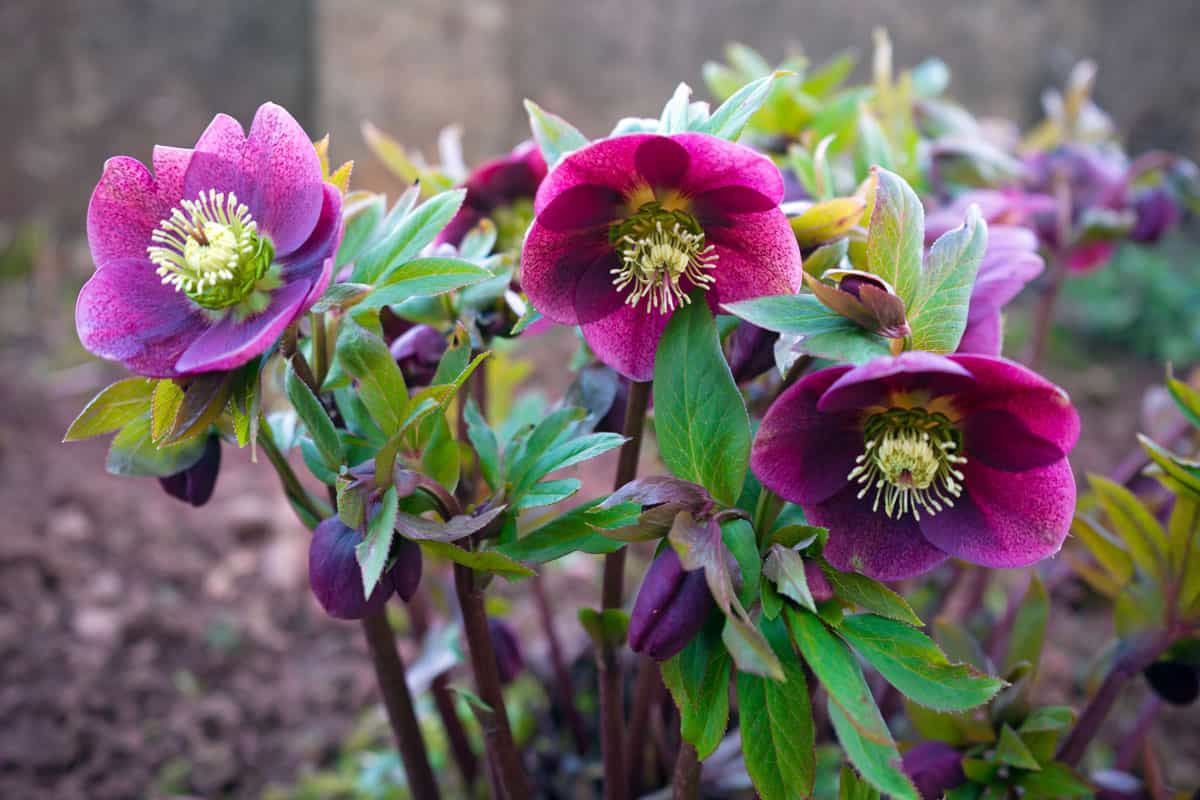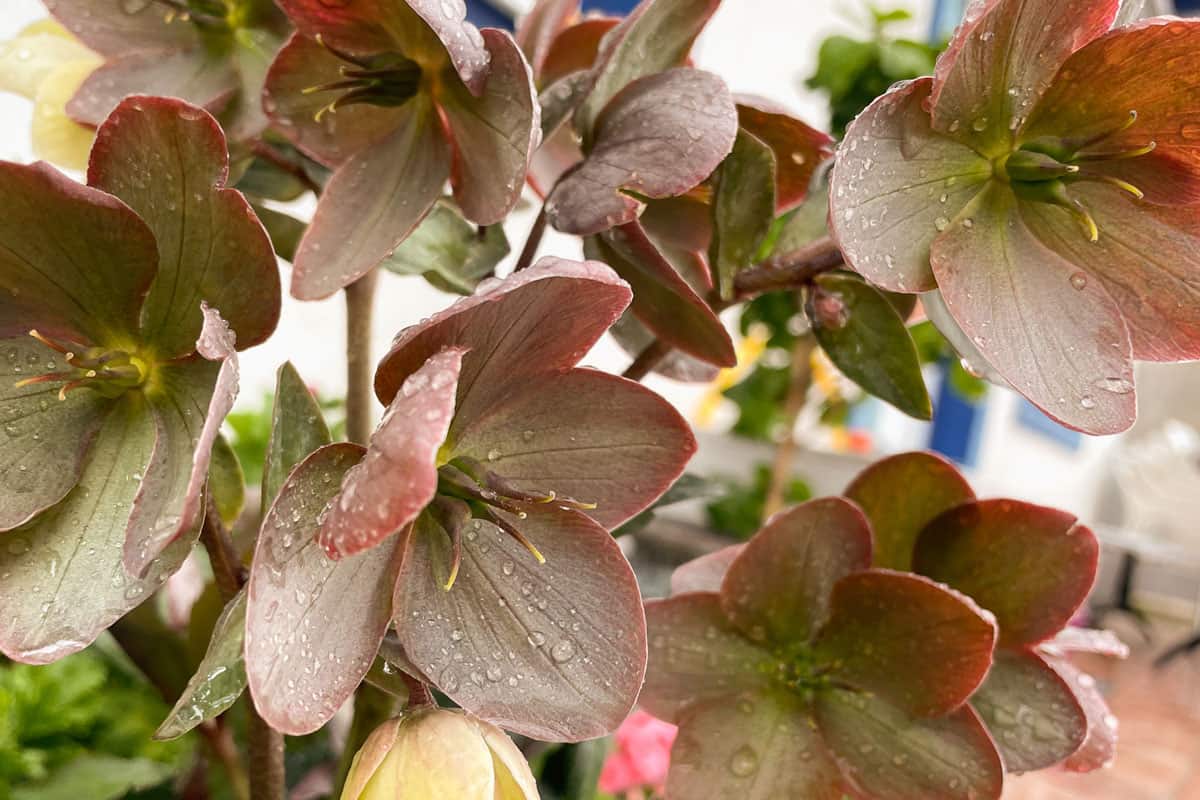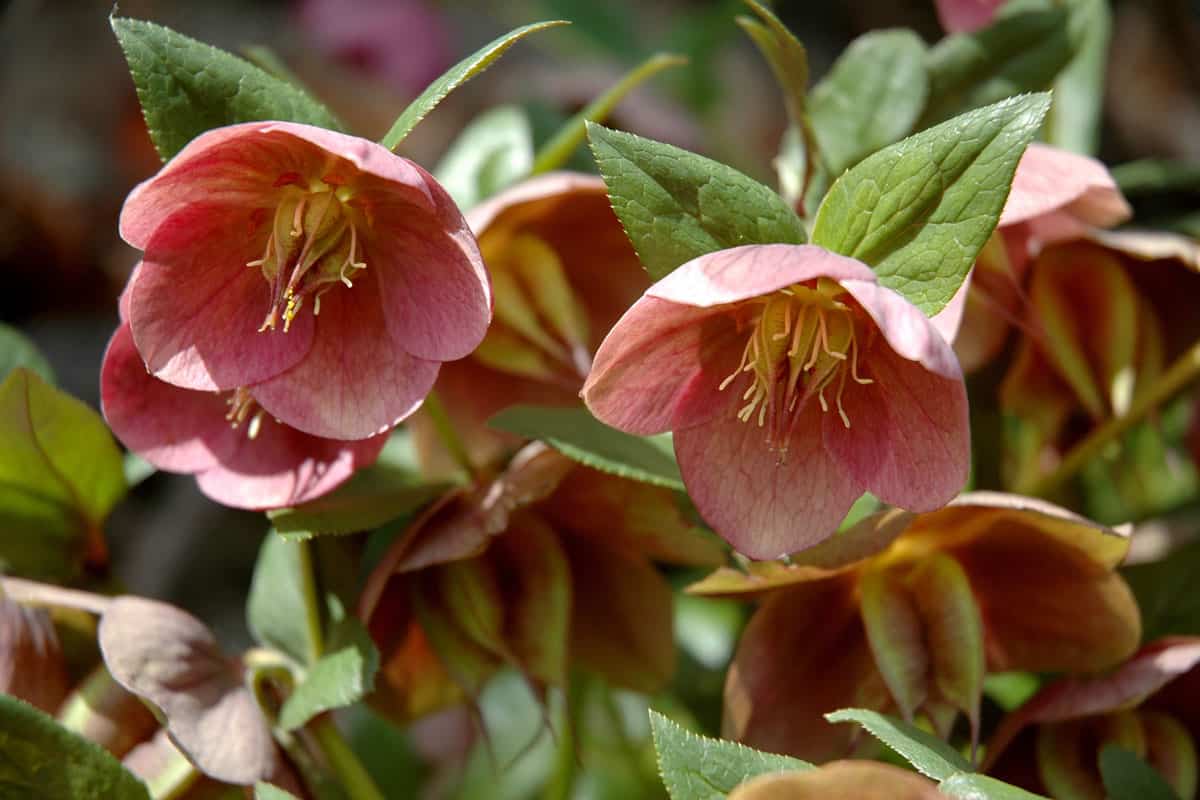It's natural to want to plant something unique in your garden, which is why we are sometimes drawn to exotic plants. One of these plants is Hellebore. You may be wondering whether they are invasive and if they spread quickly. We have researched answers for your convenience.
Having Hellebore in the garden has pros and cons. Depending on your preference, the pros may outweigh the cons or the other way around. Hellebores are invasive; they spread quickly and can be difficult to uproot (although some variations can be easier to pull).
However, they keep wildlife away because of their poisonous nature, and they look aesthetically pleasing in the spring.
Having invasive flowers in your garden is challenging and can take up too much of your time and energy. However, it still depends on whether you'd be willing to be on constant watch over the exotic plant. Keep reading below to learn all about Hellebores.
What Are Hellebores?

Hellebores, despite not being native plants in North America, are still sought-after because of their lovely blooms that break through the murkiness of late winter and welcome the warmth of spring.
Their blooms can last long until summer when their vibrant foliage matches the other growing plants in the season.
They thrive on moist but well-draining soil. During the summer, they must be guarded against the sun's harsh rays, so partial shade would be ideal.
However, they need to get as much sunlight as possible during the winter. Make sure you place them in an area with full access to sunlight.
They are grown best in woodland areas, especially since flowers can pollinate greatly. The seeds can grow quickly, turning an area into a sea of hellebores.
Where Are Hellebores Native To?
Hellebores are native to Eurasian countries, particularly the United Kingdom and China. Growing them near these areas will provide them with the best conditions to help them thrive.
How Invasive Are Hellebores?
Hellebores can be very invasive. One flower can put out a lot of seeds, which later have roots that dig deep into the ground.
If you're planning to plant them in your garden, you need to constantly watch over new seeds and remove them--unless you want uncontrollable growth.
Hellebores planted near the stream can also be troublesome because the seeds sent out by the flowers can flow with the water current and send the seeds to different locations, making them more uncontrolled.
If you're adamant about planting them, make sure it's in a spacious location so they won't crowd out other plants. Cut off mature flowers before they create a complex and hard-to-dig root system.
How Big Are Hellebores?
![pink white christmas rose hellebore helleborus, Are Hellebore Invasive [Does It Spread]?](https://gardentabs.com/wp-content/uploads/2022/12/Are-Hellebore-Invasive-Does-It-Spread.png)
Hellebores can grow up to 18 inches tall and 24 inches wide. Smaller cultivars grow around 9 inches tall and 12 inches wide.
The flowers resemble roses because of their cupped or upward-curving shape, making them attractive and sought-after despite their invasive nature.
Some species of Hellebores grow 2-inch blooms that are clustered together. They look attractive when they start breaking through the snow and growing throughout the spring.
How Quickly Do Hellebores Spread?
Hellebores spread quickly, especially when left unattended. Some species can spread for up to 3 feet. If the seeds somehow spread around the area because of the wind or water current, you may be able to spot more than a dozen scattered plants.
Once they've started spreading, there may already be an established root system. You won't be able to move them since digging them is difficult and time-consuming. You'll also kill them once you take them out.
This is why it's important to cut them back, especially the mature flowers where seeds come from. The best time to do this is during the autumn.
However, their rapid spreading is a sign of hardiness. These plants are low-maintenance and can grow easily, given the right conditions.
What Are Other Varieties of Hellebore?

Hellebores come in wide attractive varieties, and they have distinct qualities that can either be beneficial or disadvantageous to your garden.
Here are other varieties of hellebore and how sought-after they can be during winter, spring, or summer.
Corsican Hellebore
Corsican Hellebores, or Holly-leaved hellebores, grow in the late winter and last to the early summer. They are larger than the other varieties of Hellebore, and they grow cream-colored and pale-green flowers that blend into the woodlands or gardens.
They are evergreen perennials and hardy to USDA zones 7 through 10. They are tolerant to extended dry periods, making them low-maintenance, especially when planted in areas with a generally sunny climate.
Unlike other varieties that require a lot of compost, they only need minimal amounts of fertilizer. This variety is deer-resistant, so you can use them to keep deer away from your garden.
Black Hellebore
Black Hellebore, also known by the names Christmas Rose and Easter Rose, is one of the most sought-after evergreen perennials because of its delicate white blooms.
They are famous during the holidays since they match the aesthetics, especially since they bloom during the late stages of winter or the Christmas season.
You can use them as decoration by doing the following:
- Plant them near the patios and walkways to add to the holiday atmosphere during the winter.
- Plant them in shady areas near trees, ensuring you have enough space for them in case you want them as a groundcover.
- Cut the mature flowers and let them float in a water-filled bowl. This is a great idea if you want to control their spreading without wasting the flowers.
Lenten Rose
Lenten Roses acquired their name because it resembles roses, but they are not roses. They are evergreen perennials that grow around the Christian Lenten season.
Although they grow around late winter, you need to protect them from frost since the petals can become brittle and die off. During the summer, make sure to protect them and place them under partial shade.
They have pink and pale green blooms that look visually pleasing and can be used as decor. However, be careful not to consume them since they are highly toxic to both humans and animals.
Should You Have A Hellebore in Your Garden?

Having a hellebore in your garden has its own pros and cons, especially if it's not native to the area. You need to be familiar with how they behave to weigh whether they are worth the additional attention and care.
These flowers are low-maintenance in the sense that they can rapidly grow and spread, but they are high-maintenance with regards to controlling that growth and spread.
Here are the benefits and drawbacks of having hellebores in your garden.
Benefits of Having Hellebore
If you want flowers that are hardy, easy to grow, and look great anywhere in the garden, Hellebores may be a good option.
They tolerate extreme weather conditions, such as extreme cold, as they can grow in the late winter. It also tolerates drought periods, with varieties growing until the summer.
Aside from their aesthetic value and hardiness, they are also resistant to woodland animals, particularly deer and voles.
It means these plants will prevent animals from sniffing around your garden since they can detect the scent of poison in the hellebore.
Disadvantages of Having Hellebore
One of the main drawbacks of having hellebores is how difficult it would be to tame them. They are native only to Eurasia, so planting them in North America will result in overgrown and quickly-spreading Hellebores.
They can be difficult to uproot, especially if you find yourself in the middle of a hellebore ocean because of how deep the roots are. The flowers also tend to droop down, so they may look visually underwhelming unless they are strategically planted.
Aside from that, most of them are toxic to animals and humans, so they may not be ideal if you have curious toddlers running around your garden. They are poisonous when consumed, and their foliage can sometimes cause skin irritations.
Final Thoughts

Hellebores are attractive plants, but it depends on whether you're willing to go to lengths to get them under control and avoid unmitigated spread.
They are invasive unless you routinely cut them back and collect the seeds they send out. If you don't want the added hassle, you're better off with other flowers.
If you found this article informative, check out our other posts:
